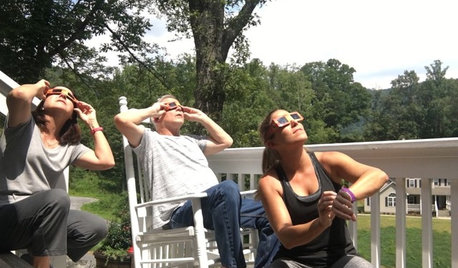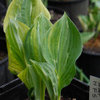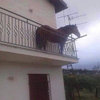Seaver
Mildred Seaver, regarded as �Queen of Hostas�; at 98
By Gloria Negri
Globe Staff / March 18, 2011
In the world of horticulture, Mildred Seaver was known as the �Queen of Hostas�� or the �Queen Bee.�� She earned those sobriquets and became a guru for hosta lovers worldwide after years of hybridizing the plantain lilies in her Needham garden.
Mrs. Seaver was the only living person ever featured on the cover of The Hosta Journal, the American Hosta Society magazine, when pictured there in the spring of 1986, said Tom Micheletti of Deer Park, Ill., the society�s president.
�There are over 7,000 different varieties of hosta, and Mildred was responsible for creating 95 of them,�� he said. �She will be remembered mostly for her plants and introduction of plants that were very distinctive, and her generosity in sharing them with friends and the society.��
Mrs. Seaver, one of the founders of the New England Hosta Society, died March 7 in Wilmington Hospital in Delaware. Her daughter, Muriel S. Brown of Naples, Fla., said she died from a perforated colon and sepsis.
�My mother didn�t want an operation,�� she said. �She was all into the circle of life.�� Mrs. Seaver, who was much honored for her contributions to hostas and hosta-lovers, was 98.
She and her family had lived in Needham since 1957, after 16 years in Stratford, Conn. In Stratford, said her son, Charles R. of Hockessin, Del., she grew more than 3,000 daffodil and 1,000 tulip bulbs that caused Sunday drivers to stop and admire.
He said his mother attributed her longevity �to gardening, her love of blueberries, and her many friends.��
�She was a lover of nature, plants, flowers, cats, butterflies and moths, color, art, and people,�� he said. �Her hybridizing style was more artistic than methodological; and her garden was not weeded, and anything but neat, with no grass, and overgrown paths littered with romaine lettuce leaves to attract slugs. Having shade, extra subsurface water, and many feet of compost, however, her garden was the ideal horticultural environment for growing hostas.��
Her husband, Charles W., died in 1995, and nine years ago, Mrs. Seaver moved to Wilmington, Del., to be near her son.
�Mildred will always be remembered as a pioneer in the hybridizing of hostas,�� said Carol Stocker, a longtime Boston Globe gardening writer. �She started breeding [hostas] in 1978, which put her in the vanguard working with new imported breeding material from Japan, where 40 species grow wild,�� Stocker said.
�She was one of the foremost local breeders. Some [of her hybrids] have stood the test of time, such as �Spilt Milk� [with its green and white centers], in a very crowded field. She would name some of them after her friends.��
Mrs. Seaver also started a hybrid line of hosta with the prefix �Sea,�� the first three letters of her surname
In the 2006 American Hosta Society Journal, Glen Williams wrote that when the Seavers moved to Needham, �Their new home had trees and more trees. Her new canopy of shade was not a friend to her precious day lilies.��
In Needham, Mrs. Seaver took a job as a secretary/stenographer, Williams said, while her husband was a chief engineer for American Optical in Chelsea.
�By the late 1960s, the [twin] children had left the nest and Mildred paid a fateful visit to the garden of Leola Fraim of Dedham, a friend who grew day lilies. Leola said hostas were the solution,�� Williams wrote.
�Mildred had a fabulous eye for knowing which hostas to use for hybridizing,�� said Warren I. Pollock of Glen Mills, Pa., a longtime friend and member of the American Hosta Society.
�Interestingly, she let the bees do all the work. All the hostas she wanted the bees to collect pollen from and pollinate other hostas, she let flower. The others, she cut off the flower stems before flowers fully developed. So those with flowers were hybridized by the bees. �Bees are much better breeders than I am,� she said. �They know which hostas to take pollen from and which to pollinate,� �� Pollock said.
Mrs. Seaver, who was, by all accounts, irrepressible and sometimes flamboyant. �Everyone should have at least one Mildred story and a dozen of her hostas. The two are inexorably intertwined,�� Williams wrote.
She could take kidding for her behavior and casual dress, sometimes wearing two hats in case someone needed one.
�Mother�s philosophy was that with every day comes the chance of surprise and a possible miracle. If we found a praying mantis or a box turtle or unusual flowers or trees, we came home and she would love to find a book to read to us telling us all about it,�� her daughter said.
She was born Mildred Richmond in Chicopee during the Great Depression. Her father worked in construction and moved the family to Florida to find work in the winter months.
She graduated from high school in West Palm Beach, Fla.
In 1935, she married Charles Seaver, a graduate of MIT who also lived in the Chicopee area.
Many hosta-lovers around the globe formed bonds with Mrs. Seaver, said Ernest Flippo of Abington. �People from England would come and seek Mildred out,�� he said. �The idea of the hosta as a friendship plant, shared among gardeners, is something she embraced and practiced.��
In June, the New England Hosta Society will host the national convention in Marlborough and Mrs. Seaver will again be honored.
Perhaps her most endearing citation was the 2006 Eunice Fisher Distinguished Hybridizer Merit Award. When called to the stage to accept it, she had her son and daughter by her side, raised their arms and said, �These are my two best hybrids.��
In addition to her son and daughter, Mrs. Seaver leaves four grandchildren and four great-grandchildren.
A memorial service and celebration of her life will be held from 10 a.m. to noon tomorrow at Forwood Manor in Wilmington, Del. Burial will be private.
Gloria Negri can be reached at negri@globe.com.







ken_adrian Adrian MI cold Z5
thisismelissa
Related Discussions
Your Favorite Mildred Seaver Introductions?
Q
Mildred Seaver?
Q
Humpback Whale
Q
Brother Stefan sport?
Q
KaylyRed